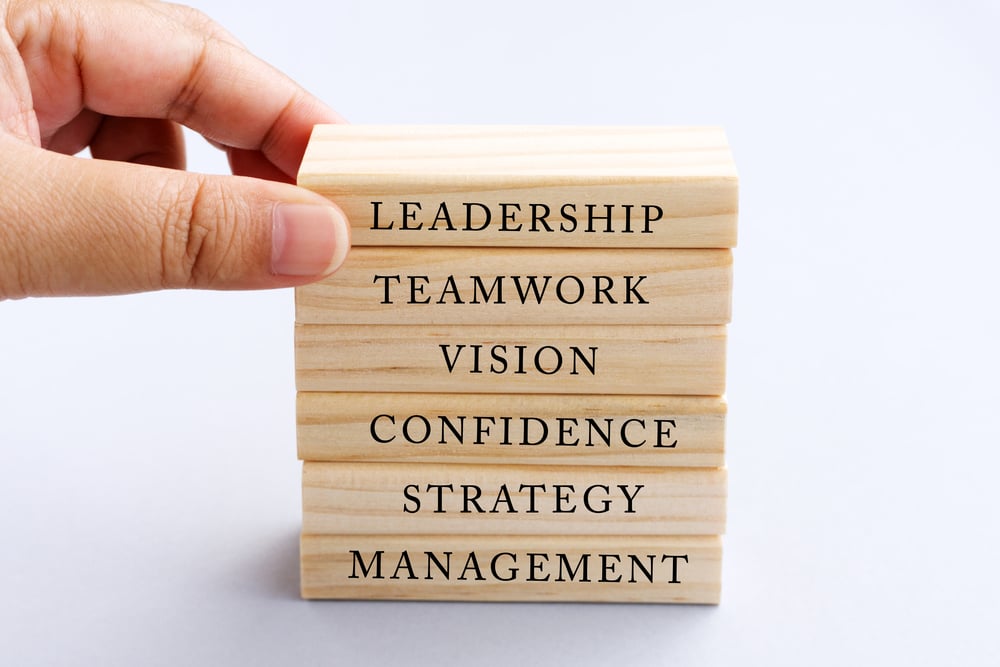The Evolution of Leadership Roles: Trends and How to Adapt to Changes

- What are the Key Leadership Skills for Navigating a Changing Business Landscape?
- How Can Leaders Adapt to New Technology and Disruptive Innovations
- What are the Biggest Challenges for Leaders in the Evolving Business Landscape?
- How Have Leadership Roles Evolved in the Digital Age?
- What are the Most Effective Leadership Strategies for Managing Remote Teams?
- Upskill with Emeritus and Become a Future-Ready Leader
Leaders don’t do extraordinary things day in, day out. They don’t douse every fire in the organization. A leader is someone who knows how to get things done. If they don’t, they at least have the gift of delegating the task to the right person in the organization. The role of a leader keeps changing every day since businesses face unique challenges that require leaders to possess key qualities and adaptability. Effective leadership roles are essential for navigating these challenges while promoting the growth and development of both employees and organizations. Leaders must think strategically, adapt quickly, make decisive decisions, and prioritize a human-centric approach in their interactions with employees.
According to a report by Gartner, 90% of HR professionals feel that for leaders to succeed in today’s dynamic business environment, they must exhibit human leadership.
Let’s understand the key leadership roles leaders must adapt to succeed in a severely competitive business landscape.
What are the Key Leadership Skills for Navigating a Changing Business Landscape?
Effective leadership is crucial in guiding organizations through uncertainty and driving success. Some key leadership roles are particularly important in navigating a changing business landscape.
Strategic Thinking
Strategic thinking is vital for business leaders to guide organizations in the right direction and ensure efficient progress. It involves understanding the dynamic nature of the changing business world. Further, it enables leaders to develop a comprehensive business strategy by considering economic conditions, customer needs, and company culture.
Data-Driven Decision-Making
Data-driven decision-making has become a crucial skill for business leaders, enabling them to make informed choices and enhance organizational efficiency. Moreover, employees are assured that decisions are based on reliable data rather than the subjective preferences of the leaders.
People Management Skills
In the past, having dedicated and competent workers was often sufficient for organizational sustainability. However, in today’s dynamic business environment, leaders must go the extra mile to attract, engage, and retain top talent. Managing people effectively becomes easy if it includes the following aspects:
- Building a positive work culture
- Providing opportunities for growth and development
- Recognizing and rewarding achievements
- Promoting work-life balance
By prioritizing effective people management, leaders can create an environment that motivates and empowers employees and increases productivity and overall success for the organization.
Communication Skills
Excellent communication involves expressing ideas clearly and actively listening to others. Leaders who prioritize effective communication skills build strong relationships, inspire trust, and promote a culture of transparency, collaboration, and innovation.
ALSO READ: What is Leadership
How Can Leaders Adapt to New Technology and Disruptive Innovations
Leaders can take these key steps to adapt to new technology and disruptive innovations.
 1. Stay Informed
1. Stay Informed
Leaders must actively stay informed about emerging technologies and disruptive innovations relevant to their industry. This involves continuous learning, attending conferences, reading industry publications, and engaging in professional networks to understand the latest trends and advancements.
2. Embrace a Learning Mindset
Building a learning mindset is necessary for leaders. Additionally, they need to foster and encourage their teams to embrace new technologies and innovations.
3. Foster a Culture of Agility
Adapting to new technology requires organizational agility. Leaders should encourage flexibility and responsiveness, allowing for quick experimentation, iteration, and adaptation. Employees should be allowed to make decisions on their own if they were to meet a customer’s expectations. It gives them a sense of ownership, and they will take more interest in getting things done.
4. Lead by Example
Leaders should lead by example and actively embrace new technologies themselves. Demonstrating openness to change, embracing digital tools, and showcasing the benefits of adopting new innovations can inspire and motivate employees to follow suit.
5. Anticipate and Plan for Disruption
By anticipating future trends and disruptions, leaders can develop contingency plans, invest in research and development, and explore new business models to stay ahead of the curve.
What are the Biggest Challenges for Leaders in the Evolving Business Landscape?
Embracing flexibility, open communication, and a proactive mindset are vital for successfully navigating the evolving business landscape’s complexities. Here are a few challenges that leaders face in navigating their journey:.
 Leading a Team
Leading a Team
Managing different personalities, perspectives, and work styles can be challenging as the business landscape becomes more complex. Therefore, leaders must navigate the dynamics of diverse teams and stay unbiased.
Developing Relevant Skills
Acquiring and developing the necessary skills to adapt to new challenges can be a significant challenge for leaders. Therefore, leaders must focus on continuous learning and skill development to keep up with evolving technologies, industry trends, and changing business practices. While they don’t have to be an expert, a basic understanding of each cog in their business wheel is a must-have.
Motivating Employees
Recognizing individual needs, providing meaningful work, and creating a positive work environment for every employee can be challenging. Therefore, leaders must find effective ways to motivate and engage employees.
Mentoring Future Leaders by Creating Succession Plans
Identifying and nurturing leadership potential and ensuring a smooth transition pose challenges for current leaders. Therefore, existing leaders must provide the right guidance and mentorship to develop the next generation of leaders. Creating a roadmap for each potential leader in the offing will make them more invested in the organization.
Managing Stakeholders
Another complex and challenging task for leaders is to manage stakeholders. Each of the stakeholders comes with their perspective. Addressing the stakeholders effectively while building a relationship and maintaining transparency is a must-have skill for leaders.
How Have Leadership Roles Evolved in the Digital Age?
Today, digital leaders have a clear vision of the future and understand the potential impact of emerging technologies. They can adapt and switch to different leadership styles. Further, they can think strategically, identify opportunities for digital transformation, leverage technology to drive innovation, improve efficiency, and create customer value.
Various Leadership Responsibilities in This Digital Age
- Leaders today embrace change and are agile in their decision-making and execution.
- They prioritize the customer experience and utilize data and analytics to gain insights into customer preferences and behaviors.
- Today, leaders leverage digital channels to engage with customers, personalize experiences, and deliver value-added solutions.
- They rely on data and analytics to make informed decisions. Further, digital leaders leverage data-driven insights to drive business growth and optimize operations.
- Digital leaders prioritize the development of digital talent within their organizations through training programs, mentorship, and knowledge-sharing platforms.
What are the Most Effective Leadership Strategies for Managing Remote Teams?
According to a report by Microsoft, nearly half of the managers (49%) find it challenging to trust their employees in a remote work environment. This highlights the importance of honing the skills necessary for effectively managing remote employees. Let’s look at proven strategies that leaders should use to manage remote work.
1. Understanding the Challenges of Working From Home
Recognize the unique challenges that remote employees face. Empathize with their situations and provide support and flexibility to help them navigate these challenges. Why should employees care if the organization doesn’t empathize with them?
2. Set Clear Strategies for Remote Work Productivity
Establish clear expectations and guidelines for remote work productivity. Define goals, deliverables, and deadlines to keep remote team members focused and accountable.
3. Identify and Provide the Right Tools for Productivity
Evaluate and provide remote team members with the necessary technology and tools to perform their work efficiently. This may include project management software, communication platforms, file-sharing tools, and other collaborative software. There are a variety of tools that empower remote workers for each function that you can think of.
4. Set Aside Days for Team Interaction
Dedicate specific days or time slots for team interaction and collaboration. This could involve team meetings, virtual coffee breaks, or team-building activities.
5. Regular Follow-up With Remote Employees
Schedule regular check-ins with remote team members to provide guidance, support, and feedback. These one-on-one meetings can address any challenges, clarify expectations, and provide professional development and growth opportunities.
Upskill with Emeritus and Become a Future-Ready Leader
Leadership courses at Emeritus can help build leaders by providing them with comprehensive and practical leadership knowledge, access to experienced faculty, opportunities for peer learning, and networking. These resources and experiences contribute to the growth and development of leaders, equipping them with the skills and knowledge to succeed in their leadership roles.






